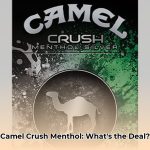American Spirit cigarettes: they’re known for their colorful packs and the promise of “natural” tobacco. But how much truth is there behind the marketing? This guide cuts through the confusion surrounding American Spirit’s different blends. We’ll break down each color, comparing what the company says about their flavor and nicotine levels to what’s actually been reported. We’ll also look at their “natural” claims and what that really means. This isn’t an endorsement – we’ll be upfront about the serious health risks of smoking – but it will give you a clearer picture of what you’re getting with American Spirit cigarettes, so you can make informed decisions (even though the healthiest decision is to not smoke at all).
American Natural Spirit Flavors: A Colorful Conundrum
Let’s explore the American Natural Spirit Flavors. They’re known for their colorful packs and the promise of “natural,” additive-free tobacco. But is that really the whole story? Let’s unravel the mystery behind those vibrant hues and look at the nuances of each variety.
Decoding the Rainbow: What Do the Colors Really Mean?
American Spirit uses colors – yellow, orange, blue, light blue, dark blue, celadon, light green, dark green, gold, turquoise, black, and non-filter – to signal different flavors and nicotine strengths. While yellow is often described as a bolder, stronger smoke and blue as milder, understanding the full spectrum requires a deeper dive.
Many smokers believe that the darker the color, the stronger the cigarette. This can be a general guide but isn’t always accurate due to variations in blends and nicotine levels. Without clear, consistent information from the company, it’s challenging to definitively state the differences between these colors.
American Spirit cigarettes come in a variety of colors, each with their own unique meaning and characteristics. The colors are designed to represent different strengths, flavors, and qualities of the tobacco blend inside. Understanding what each color signifies can help smokers select the variety that best suits their preferences.
The “Natural” and “Organic” Claims: A Closer Look
American Spirit heavily emphasizes its “natural” and “organic” ingredients. Let’s examine what those terms truly mean in this context.
First, any “organic” certification only applies to how the tobacco is grown. It doesn’t say anything about the health effects of the finished product.
Second, even if the tobacco is “additive-free,” burning it still creates a ton of harmful chemicals. The “natural” label doesn’t magically make smoking safe. Additive-free means that no additional chemicals are introduced during the manufacturing process beyond the tobacco itself.
Third, the emphasis on “natural” is a savvy marketing move. People are drawn to products described as natural, and this influences their purchasing decisions. But it’s important to remember that “natural” doesn’t equal “healthy,” especially when it comes to something as dangerous as smoking. American Spirit cultivated a particular image, often associated with a “natural,” “authentic,” or even “health-conscious” lifestyle.
The bottom line? No matter how “natural” the tobacco is claimed to be, smoking poses severe health risks.
The Uncomfortable Truth: Health Risks of Smoking
Let’s be blunt: smoking is incredibly dangerous. The specific amounts of nicotine and tar might differ slightly between the colors, but the potential health consequences – lung cancer, heart disease, respiratory problems, and numerous other serious illnesses – are extremely high across the board. Reputable medical organizations worldwide consistently warn about the extreme dangers of smoking. No amount of clever marketing changes this fundamental truth.
All cigarettes, including American Spirits, are harmful and addictive. The best choice for your health is to not smoke.
Examining American Spirit’s Marketing Strategies
American Spirit’s success partly stems from its marketing that plays on the desire for “natural” products. However, the lack of transparent, consistent information regarding nicotine content and the exact makeup of their tobacco blends raises major concerns. Ongoing research may shed light on the motivations and demographics of American Spirit smokers.
Let’s look at the inconsistent data available:
| Color Variant | Advertised Flavor Profile | Reported Nicotine Levels (mg/cigarette; estimates vary widely) | Ingredient Information | Reliability of Available Information |
|---|---|---|---|---|
| Yellow | Full-bodied, natural, mellow blend | 1.25 | 100% additive-free, organic tobacco | Medium |
| Orange | Uncompromised smoothness in American Spirit’s authentic style | 0.95 | Organic guarana | Medium |
| Blue | Authentic and full-bodied for a robust tobacco experience | 0.60 | All-natural tobacco blend | Medium |
| Light Blue | A lighter rendition of American Spirit’s classic full-bodied flavor | Inconsistent and often unclear data | Essence of the brand’s rich, original blend but in a lighter form. | Low |
| Dark Blue | Intensely robust with a focus on pure, unadulterated tobacco taste | 1.15 | Rich, full-flavored profile | Medium |
| Celadon | A balanced blend combining the smoothness of lights with richness | Not Available | Perfect balance between the lightness of a mild cigarette and the satisfying depth of a full-flavored smoke. | Low |
| Light Green | A unique blend of organic mint and mellow tobacco | 0.65 | Organic spearmint. | Medium |
| Dark Green | Bold organic menthol for a full-flavored experience | Not Available | Robust, organic menthol flavor | Low |
| Gold | Organic simplicity and mellowness in every puff | Not Available | Organic | Low |
| Turquoise | Deeply rich and fuller-bodied organic tobacco experience | Not Available | Rich and robust flavors of natural tobacco. | Low |
| Black | A rich and luxurious blend, infused with Perique tobacco | 1.15 | 100% additive-free, organic tobacco. | Medium |
| Non-Filter | Unfiltered, pure, and bold – the true aficionado’s choice | Not Available | Premium, additive-free tobacco | Low |
This table highlights the varying degrees of clarity and consistency in the information available for each American Spirit variety. The lack of standardized reporting on nicotine and ingredients calls for transparency and consistency.
Making Informed (But Unhealthy) Choices: Advice for Consumers
Ultimately, whether or not to smoke is a personal decision. However, consumers deserve access to reliable, understandable information so they can make the best choice for themselves. The inconsistencies in information available add to the confusion and risk for smokers.
This exploration of American Spirit flavors highlights the need for skepticism about marketing claims and underscores the need for greater transparency from tobacco companies, along with stricter regulations on marketing practices. Most importantly, it reinforces the extremely serious damage to your health from smoking.
How to Compare American Spirit Cigarette Nicotine Levels by Color
Let’s find out How to Compare American Spirit Cigarette Nicotine Levels by Color.
Key Takeaways:
- American Spirit cigarettes show nicotine variation across color-coded packs.
- Reported nicotine levels differ across sources, highlighting inconsistencies in testing and reporting.
- “Natural” marketing doesn’t negate health risks.
Decoding the Colors: Nicotine and Flavor
American Spirit’s color-coded packs—from light to dark—don’t directly translate to a simple high to low nicotine scale due to inconsistencies across sources.
How to compare American Spirit cigarette nicotine levels by color isn’t straightforward. You’ll find differences depending on the source.
Let’s look at reported values:
| Color | Reported Nicotine Range (mg/cigarette) | Reported Flavor Profile | Source Reliability |
|---|---|---|---|
| Yellow | 0.5 – 1.25 | Full-bodied, natural, mellow blend | Medium |
| Orange | 0.95 | Robust, smooth | Medium |
| Blue | 0.6 – 1.0 | Authentic, full-bodied | Medium |
| Light Blue | 0.6 | Lighter, classic | Low |
| Dark Blue | 1.15 | Intensely robust | Medium |
| Light Green | 0.65 | Mellow, spearmint | Medium |
| Black | 1.15 – 1.8 | Rich, luxurious | Low |
Note: Nicotine content can vary between cigarettes and batches.
“Natural” Doesn’t Mean Harmless
American Spirit emphasizes “natural” and “additive-free” tobacco. But nicotine is naturally occurring in tobacco and is highly addictive and harmful.
- Water Wheel Electric Generator Provides Free Home Electricity - December 15, 2025
- Choosing the Right Portable Hydro Turbine for Your Needs - December 14, 2025
- Best Portable Hydro Generators for Off-Grid and Outdoor Power - December 13, 2025
















